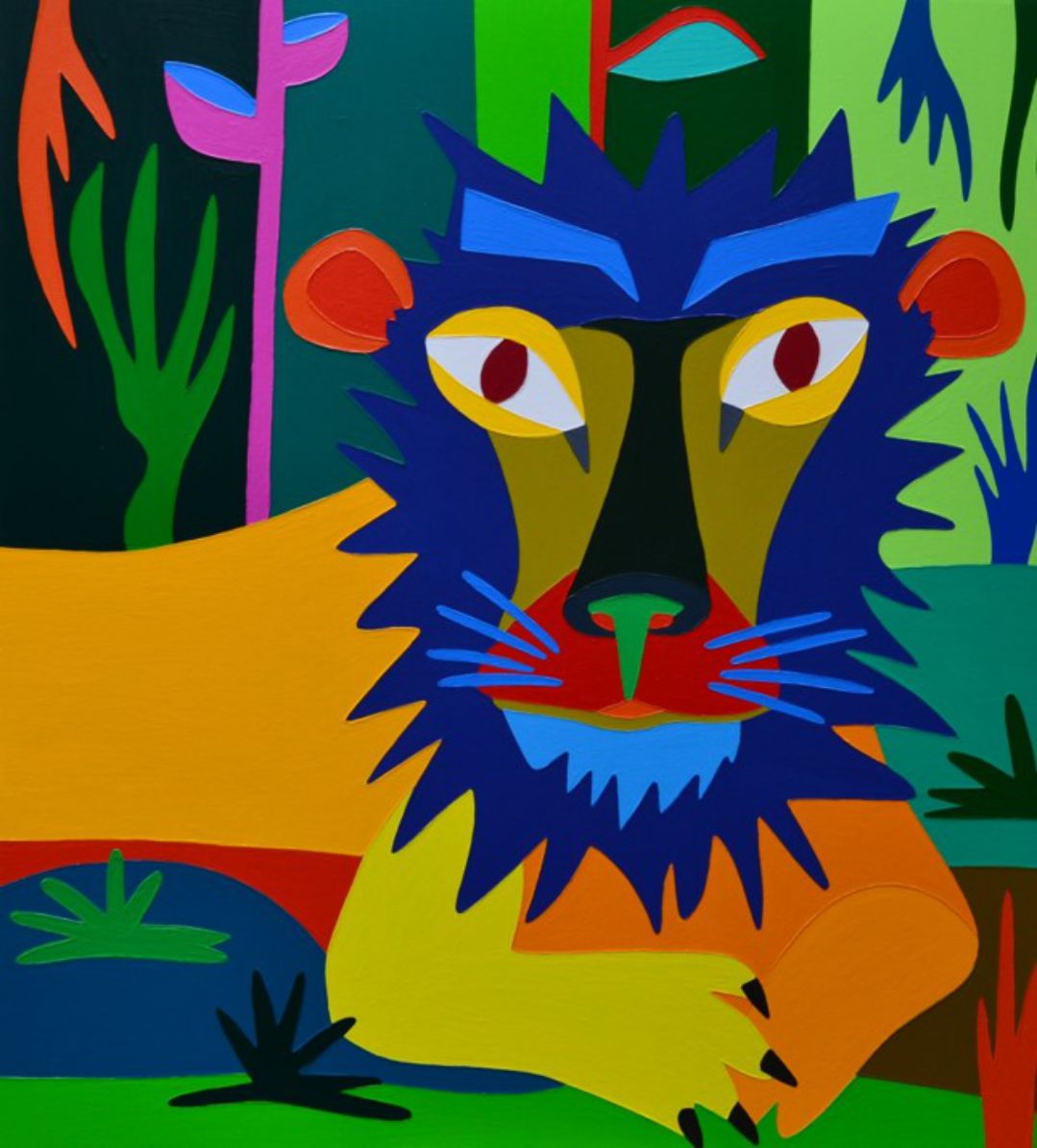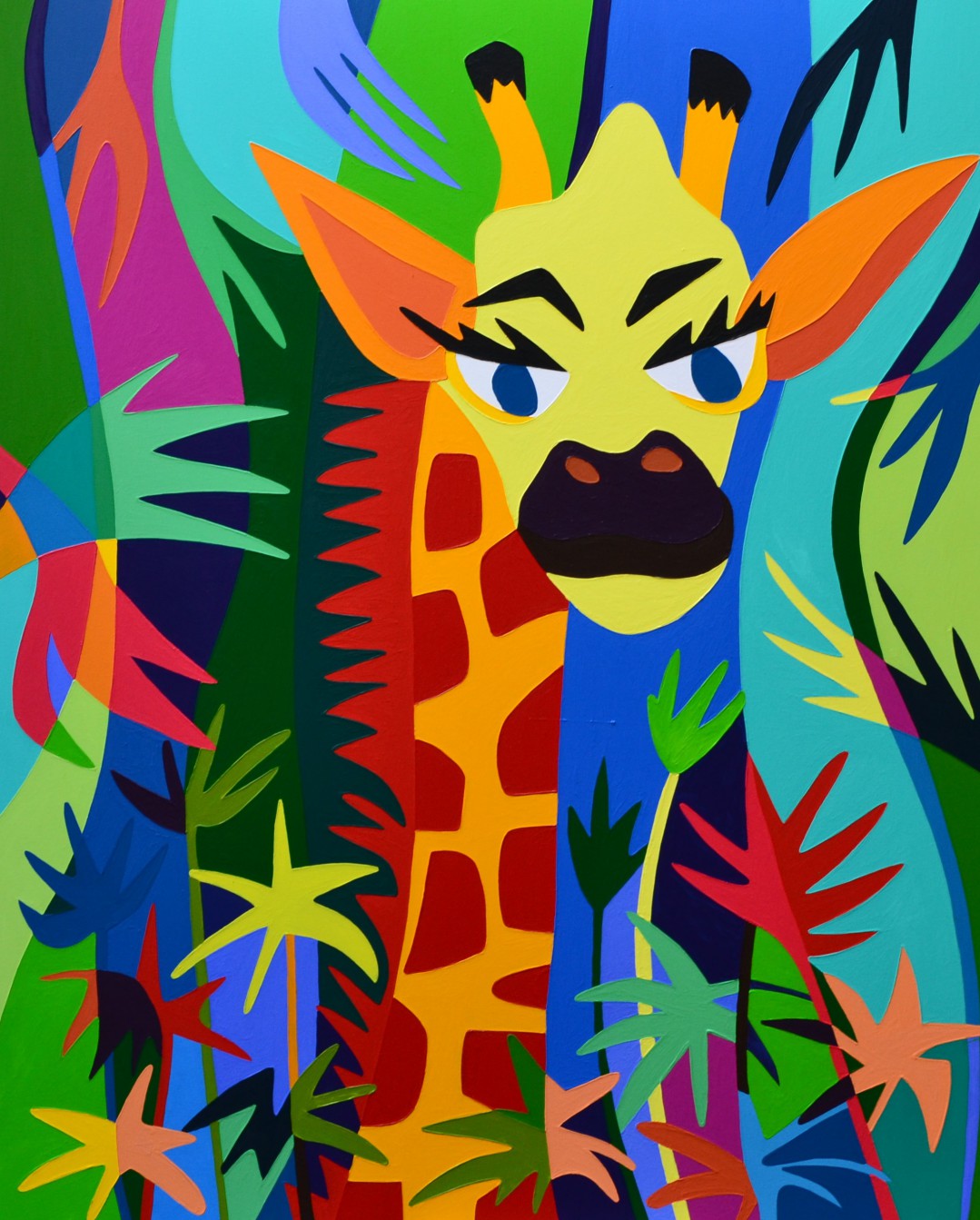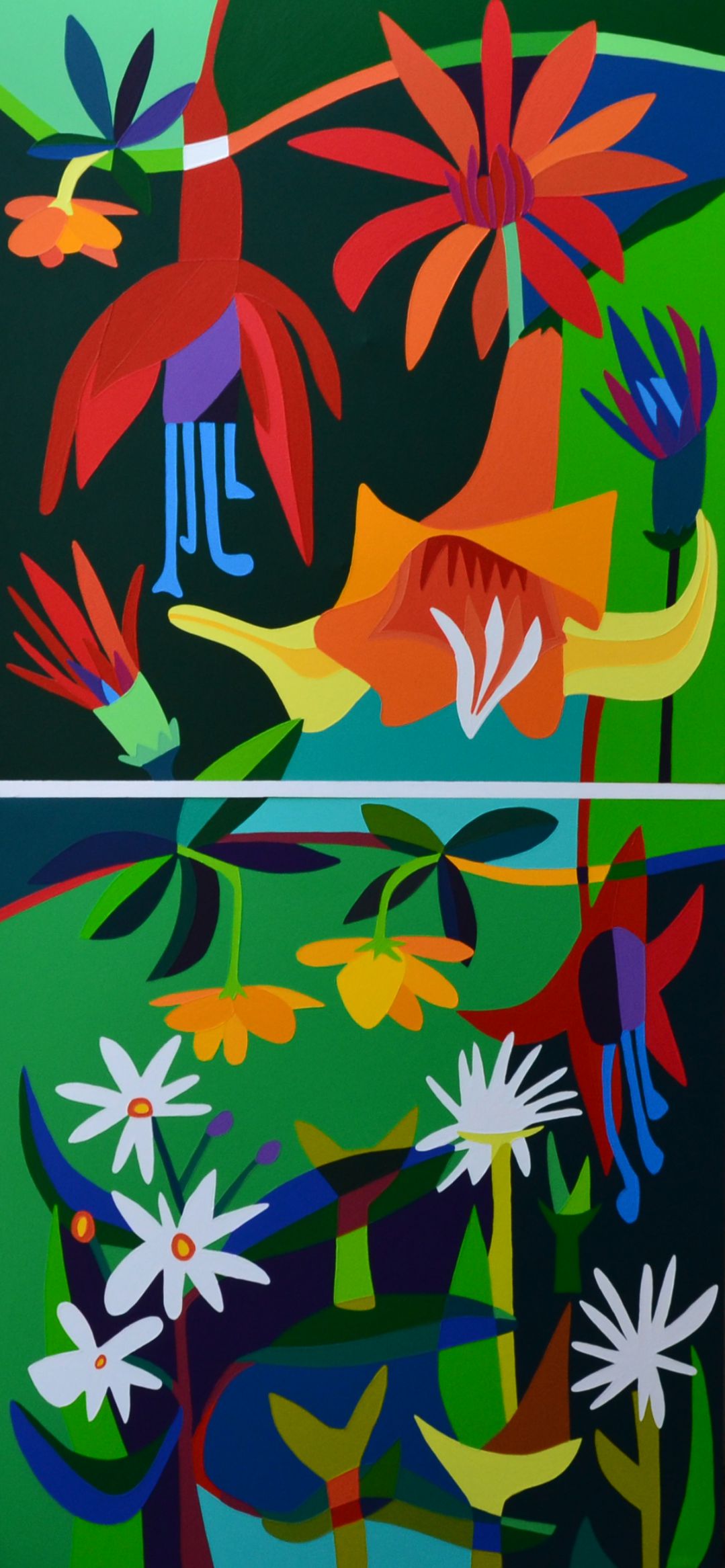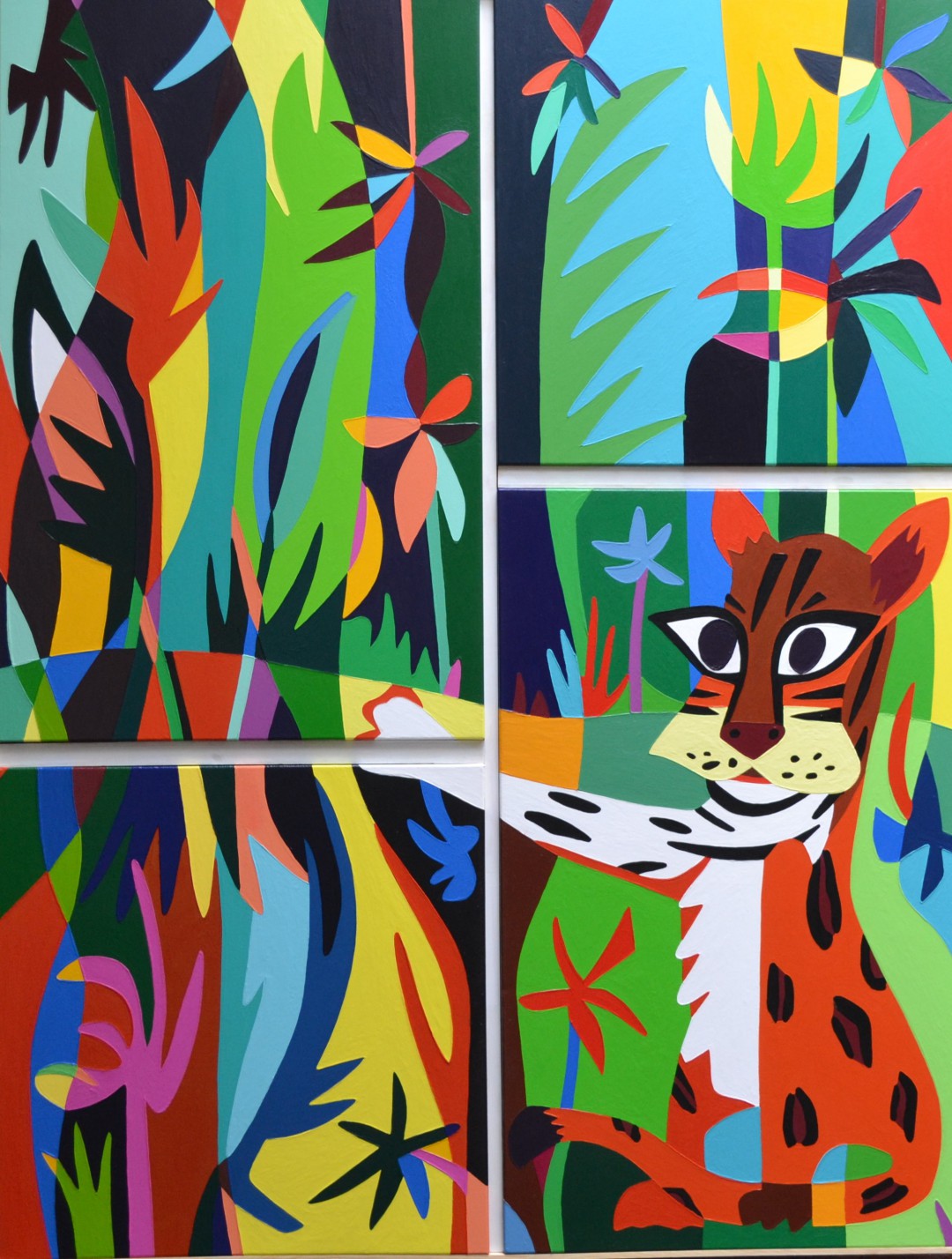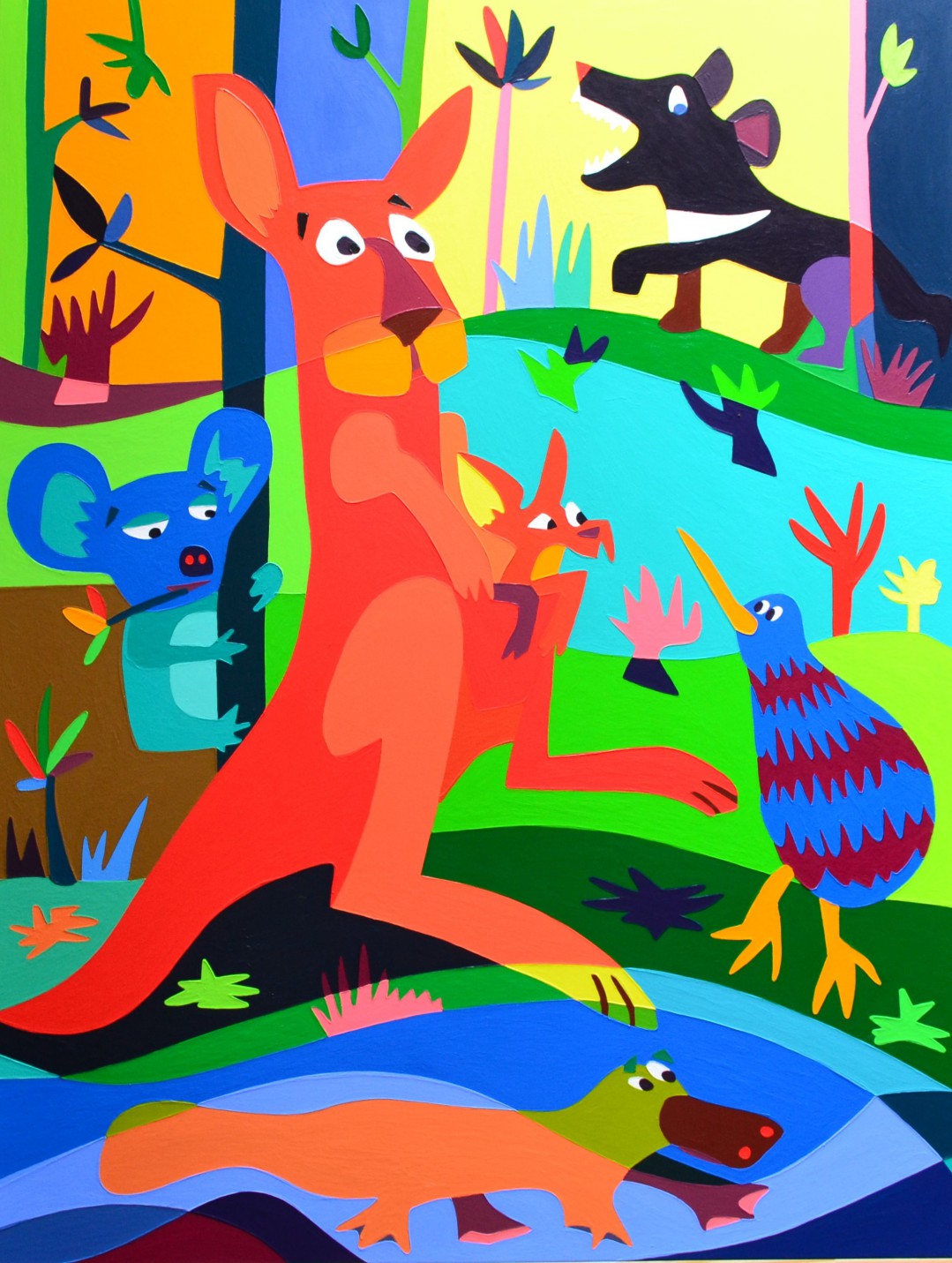SCHOOL is the new artwork by the artist, created with a profound intention to further connect emotional education with the natural world. The piece was inspired by the remarkable outcomes w...
Learn to interpret, understand, and connect with each artwork
Learn to interpret, understand, and connect with each artwork
Get a high-quality replica of your favorite artwork today
PRESENTATION
There are many ways to interpret, understand, and present the artist.
Over time, their style has evolved, transitioning from pure abstraction to figurative forms with a strong sense of organicity.
Today, their art is defined as a combination of figurative geometric and organic abstraction. It is organic, above all, due to the subtlety and sensitivity of their freehand strokes, which bring figures to life in motion, endowing their characters with expression and dynamism.
Each of their works is a unique piece that engages in dialogue with the others, coexisting harmoniously within a rich color palette. Through them, the artist describes and details meticulous research in biology, geography, and natural sciences, allowing them to address environmental themes, inviting awareness and deep reflection.
The artworks can be appreciated from multiple perspectives: for their vibrant colors, the intensity of their gazes, or their connection to different ecoregions or continents. But they can also be classified according to their origin: native, exotic, or endangered species, inhabitants of the sea or the forest…
However, the most important thing is that all of them can be studied by children and contemplated by those who wish to immerse themselves in an artistic universe.
CLASSIFICATION OF THE WORKS:
1. Ecoregions and Native Species of Argentina
2. Forests, Jungles, and Flora
3. Animals of the African Continent
4. Animals from Other Continents
5. Abstract, Aquatic, and Thoughtful Works
INDEX
Gonzalo once again surprises us with a work of art and shares his inspiration: “The Shoebill is one of the most enigmatic and fascinating aquatic birds of the Mother Continent, Africa. Its ...
A Work of Art for Wildlife This artwork was born with a purpose: to raise awareness in society about the importance of acting with consciousness, respect, and prudence when crossing a natio...
The Great Wolf of South America. The Aguará Guazú is the largest wild canid in South America. Its figure is unmistakable: long legs that allow it to reach high speeds, a slender body, reddi...
Gonzalo shares with us that all lemurs are primates native to the island of Madagascar, where they evolved in isolation, developing unique characteristics. With more than 100 different spec...
With this work, the artist seeks to dispel myths of fear and suspense surrounding nocturnal species and highlight their importance in nature. Often, adults pass on unfounded fears to childr...
The oryx is a majestic antelope adapted to the harshest environments on Earth, such as deserts and dry plains in Asia and Africa. Large and robust, this animal has become a symbol of surviva...
The artist's work captures the essence of a unique ecosystem, where various native species coexist in harmony, forming part of Argentina’s invaluable natural heritage. Península Valdés, loca...
The latest work by Gonzalo Álvarez invites us on a continuous journey of self-reflection. Like the black panther, we can develop the ability to observe, practice patience, and cultivate sere...
This work is born in the heart of a forest in southern Patagonia, Argentina. The artist, immersed in constant introspection, finds in the mountains a refuge to be alone, to pause, and to sta...
In The Quetzal, Gonzalo Álvarez not only offers us a masterful depiction of a sacred bird but also invites us to deeply reflect on our connection with nature and our own spiritual essence. I...
Gonzalo’s latest work, dedicated to sloths, captures the tenderness and emotional trust that emanate from these fascinating mammals. Sloths, who spend 90% of their lives hanging from trees, ...
The hippopotamus is a large wild animal, primarily herbivorous, that inhabits sub-Saharan Africa. It is a semi-aquatic mammal that lives in rivers and lakes; during the day, it rests in the ...
In this work of art, the artist presents two mountain goats observing in silence side by side from the summit of a high mountain. Gonzalo states: “Mountain goats possess great skill and bod...
“A gray Wolf not so gray” is a work created by the talented artist Gonzalo Alvarez. In this piece, Gonzalo immerses us in the fascinating world of the gray wolf (Canis lupus), a species of p...
Back to back! In the Serengeti, buffaloes work as a team to defend each other from predators. The great migration of these majestic animals is one of Nature’s most incredible spectacles, cha...
Flamingos are an inspiring example for humans. These gregarious birds live in community and accompany each other throughout life, like true friends. From childhood, children learn from their...
Gonzalo Álvarez’s latest work resembles a peacock spreading its tail in a fan shape, radiating joy in awakening the dreams of others. The name “Anand” has Indian origins and means supreme jo...
The natural biome of the Pampas region in Argentina is the grassland. Within this biome, the dominant vegetation type is the prairie, followed by the steppe. In this area, five subregions ar...
KATU is the name of the new animal character in Gonzalo’s work, an intrepid ring-tailed coati freely roaming the forest. Its name means “strong” in Guarani language. These small carnivorous ...
Environmental artist Gonzalo Alvarez presents “The Jungle Magicians”, highlighting the importance of costume play in childhood. Inspired by the panther chameleon from Madagascar, which camou...
Nepal is the name of the new character created by Gonzalo Alvarez, an adorable red panda who watches us from a mountain forest. Born on the eve of the Year of the Dragon, which according to ...
ECOSISTEMA is a triptych theatrical piece that reflects the interaction between different species of animals from around the world. These animals gather in a forest to directly observe human...
On this occasion, the artist gives prominence to an OKAPI from the Congo Jungle. This jungle is located in the heart of Africa in a state of conservation due to the constant problems of defo...
MANDRILO is the name of the character created by the artist in a very cool new work of art. Like many of the characters that the artist proposes with his works, this curious mandrill also f...
This work for the artist has a very special meaning because it connects him directly with the emotion of a child. The work is born from a special bond with a child who captivated him by his ...
The pangolin today is the most trafficked insectivorous mammal in the world. It is on the podium of critically endangered species. In both continents where it lives, it is persecuted for its...
The character of the work is a puma inside the forest. Observing his serene look invites us to reflect. What does NEO wake us up with his look? Gonzalo affirms: “We must be able to denatur...
IL BOSCO is a triptych work of art that shows the magic of the pronounced forest. “We need to talk about ecosystems before it’s too late…” says Gonzalo. This work symbolizes t...
The name of Libertido was born from a pedagogical meeting between initial level teachers in a seminar on art and awareness for the initial world. The name arose as a proposal from the teache...
Every artist creates his works of art from concerns, needs and emotions. Gonzalo does not escape this rule. His recent work has a very successful and punctual pedagogical intention. The SOUT...
“Insects are the smallest and most diverse animals on earth, they are all essential for the balance and development of ecosystems, they contribute to pollination and collaborate with the rep...
This work of art inspires to know the botanical world and introduce it in the classroom. Gonzalo offers us the opportunity to learn about tree species and awaken curiosity and imagination in...
“The human being often tends to create obstacles instead of bridges, to immerse himself in the individual and to draw selfish barriers instead of attenuating the path of others. Especially i...
“CONCAGUA was born to open paths achieving changes in the way we express our emotions.” This is how the artist manifests it by creating an elephant with an important stage presence. A blue e...
This work was also shaped by real emotions. A group of children and their kindergarten teacher virtually met the artist. Exchanging emotions with them was fantastic and it inspi...
FOX is one of the most optimistic works that the artist proposes to transform education and thus humanity. He raises altruistic love and kind love in the classroom: And as long as we can de ...
APU, is the name chosen for the spectacled bear that was born with a great desire to cuddle. “Ukumarí or Ucumari” is an indigenous word that the Emberas Chamí use to identify this native spe...
“THE KING”, was born to transform, to roar for them… Roar to speak of love in many new ways. For children to be respected. “Roar” is the name chosen for this lion. He was born to protect c...
This work immediately takes us to a jungle. To know more about native and endemic species of Argentina mainly. Platyrrhines are New World arboreal primates that live in the tro...
Moose are a wonderful species, here is Fausto (Faust) with a subtle look to help us understand what compassion and natural respect for each other is. Blue as a color of inspiration to balan...
The giraffe “PEPITO” is the unique character of this work. In a new awakening he was born to accompany the boys and teachers in the classrooms. He came to express the collective friendship o...
The NOA work immediately takes us to a geographical and ecological region of Argentina. Although their name refers to several provinces in northwestern Argentina, these endangered species wa...
This work invites us to imagine and reinterpret history after passing 500 years. To discover that flora of Patagonia that is still alive and unseen. “The conquest” and the voya...
“Nénggòu” is the name chosen for the European lynx. It means “power” in Chinese, the power of action: the “I can”. His presence, gaze and colors express a lot. It is the way the artist uses ...
It is a work that was created to strengthen education from Knowledge, what the birds themselves teach humanity. These birds inhabit Argentina and Latin America. The work also represents free...
This new work invites you to discover a natural forest from the inside. The artist describes it in colors and shapes after having been in person touring it, also walking through a volcano in...
The year begins and the artist surprises us with an extraordinary new work in triptych. A complete work that challenges, that invites you to reflect on. The strong presence of t...
The work allows us to know a particular story of an ocelot cub called “Pardus” who became orphaned and one day will be free again in the Misiones jungle. A sensitive and native species of th...
The work is an immediate response to deforestation in ecosystems. After knowing the realities of indigenous families in the province of Chaco. The artist expressed himself by devising a fant...
This work synthesizes the strength of trust. The artist connects the innocence of these not so well known species from another continent. The expressions of these animals show the example of...
With this combination of color and soft shapes that are integrated into the work, the artist expresses the spirituality and freedom of these wonderful birds. The work is an encounter and a s...
For the artist, the Iberá work marks a new language of communication in the non-word and proposes a new challenge. He freely uses color to express himself and make known the native Argentine...
The work finds the purity, the simplicity and the synthesis of a native forest with its species in coexistence and in its maximum expression. The piece of art is a call to introspection, it ...
Here color is key to show the freshness and importance of freshwater ecosystems, essential for health and our lives. Wetlands are great transformers of oxygen. The work shows the native flor...
It is a very significant work, since from a more distinct figuration in his abstract style the artist can express his environmental knowledge. This work is linked to the subsistence of the m...
“El Brote” (The Bud) is a detachment that is born precisely from a parallel work called “Yungas”. The artist often plays and is reflected in the work. Sometimes it is a crazy microbe, a colo...
Not cutting the natural connections was the artist’s challenge in this work. The Quechua name Yunga means “Warm Valley”, they are also recognized as “Mountain Forests” or “cloud forests”. Th...
The work manifests the origin of a Forest, it is a call to the environmental conscience of the planet to save all the original forests. The only green color palette represents hope, posing a...
The artist in this work expresses with great strength, determination and color his vision of life. His intention also aims to reflect and rethink the reason for the humanitarian crises, soci...
Here are the microorganisms reviled by the social imaginary, but essential in the functioning of the ecosystem. Through an invitation to play and in turn to discover the importance of these ...
This work was chosen by authorities to represent our country in environmental forums to the FAO. The work identifies these exotic species of fauna and flora that are harmful to our environme...
This work develops the importance of protecting the tropical and subtropical forests of the planet. They are the habitats and natural environments of millions of birds. The artist tells us t...
As its name indicates, the work is a determined and firm position. Today, society consumes too many things that it does not really need, generating bad consumption practices that leads to en...
The color palette used by the artist in this work is a way of questioning the poorly achieved deforestation by man in native forests and the abuse of land use by agriculture that ends in des...
The work is so called to understand native species in Argentina. In particular, the work involves the Tarucas, also known as northern Andean deer, the Swamp Deer, and the Huemules in souther...
In this work, the artist manifests his rebelliousness and his wild side, in a very deep cry against forest exploitation and the threat of fires caused. It’s colors and the abstract geometric...
The artist marks with this color palette an intense challenge against climate change and global warming. His travels and his tour of the Los Glaciares National Park, located in the southwest...
The Tiger and the Dragon represents the balance of Yin and Yang, it is one of the most fantastic, intense and abstract works of the BIO Project. Gonzalo Álvarez wanted to propose a new commu...
The pure abstraction of the work questions the observer. Are we capable of understanding the universe, the origin of things and the nucleus? Millions of microparticles make up the whole. We ...
Water here was represented by what it is: “source of life”. An indispensable element of Nature. The work is born from a trip and has had nine months of work for its creation. The artist has ...
What is a Jungle? For Gonzalo, the native forests have a great value and a great meaning: “freedom”. The work is an extract from the missionary jungle. His work manifests the natural power o...
It is the transcendental art piece of the Projecto BIO. From her came the idea of starting to create awareness through art and make it a reality. Over time, the artist began to materialize w...
GET MY ART PRINT
- Size: 32 x 47.5 cm
- Photographic paper
To acquire your replicas in sheet format, you can request them by clicking the Whatsapp button, by mail to [email protected] or by completing the following form:








































